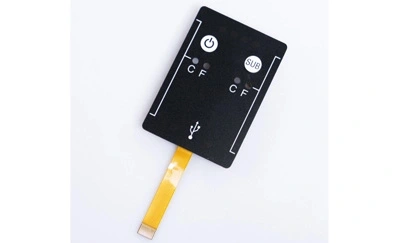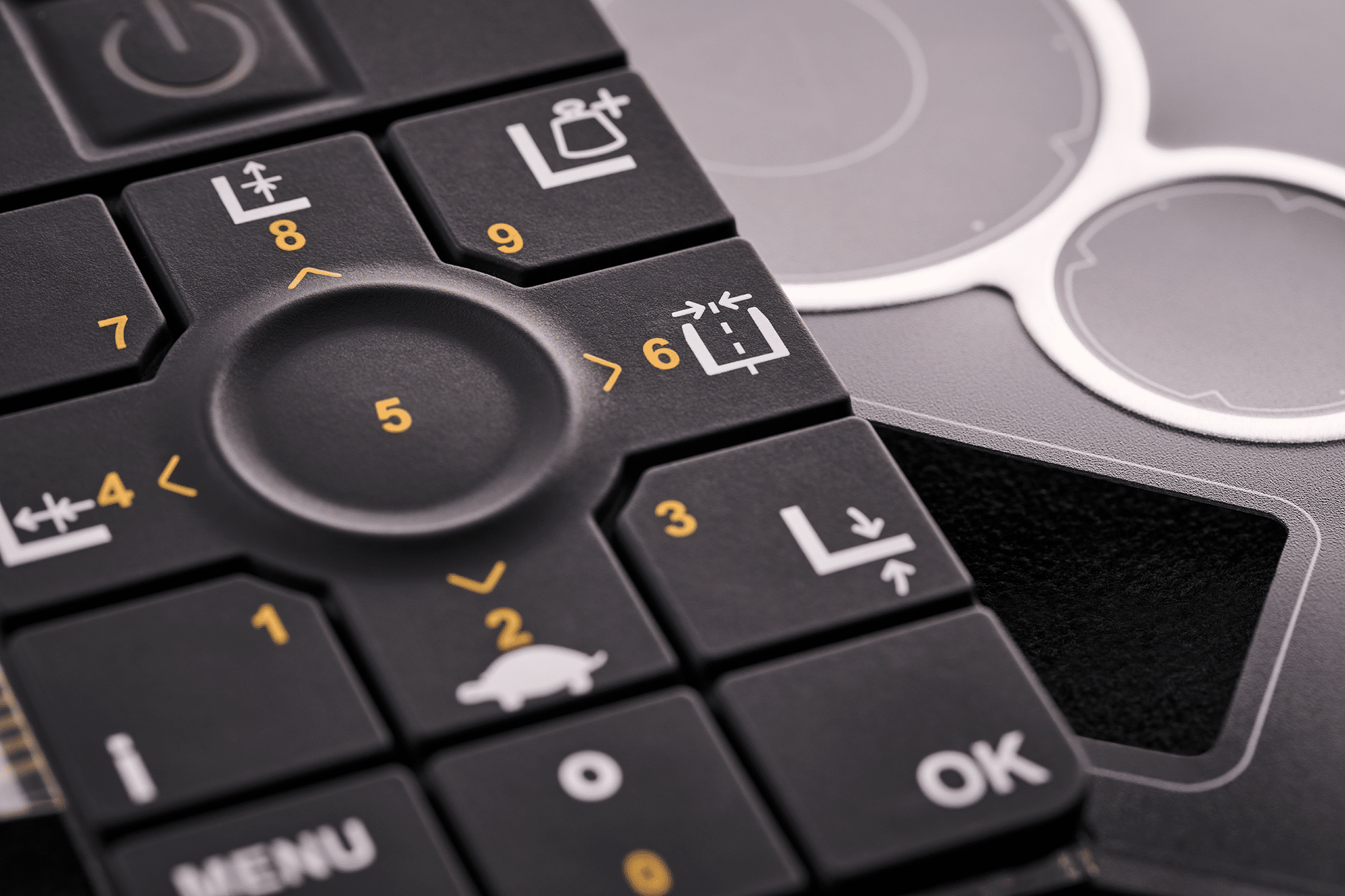Recognizing the Significance of Membrane Change in Modern Electronic Devices
Membrane buttons are indispensable elements in modern electronic gadgets. They provide a blend of functionality and style that improves individual communication. Their long lasting and light-weight nature makes them suitable for numerous applications. As sectors develop, the demand for personalization and progressed functions expands. Understanding just how membrane switches over add to innovation exposes their importance in forming the future of electronics. What exists in advance for this innovation?
The Basics of Membrane Layer Change Technology
Often forgotten, membrane layer switch modern technology plays a crucial role in the modern-day electronics landscape. These gadgets, composed of multiple layers, offer as interface for numerous electronic items, varying from household home appliances to medical devices. A regular membrane button includes a graphic overlay, a spacer layer, and a circuit layer, which are thoroughly put together to develop a practical interface.When pressure is related to the overlay, the circuit layer is finished, allowing signals to be transmitted to the tool. This innovation is known for its flexibility, enabling customization in functionality, shape, and design to fulfill details user demands. Additionally, membrane layer switches are thin and lightweight, making them ideal for applications where room is a costs. Their toughness and resistance to environmental factors even more enhance their charm, guaranteeing they can hold up against severe problems while keeping functionality. On the whole, membrane layer switch modern technology is important to creating effective and user-friendly digital devices

Key Benefits of Membrane Switches Over
Membrane switches over deal numerous key advantages that make them a preferred selection in numerous electronic applications. Their style permits a compact kind factor, making it possible for producers to produce smooth and lightweight gadgets. In addition, membrane buttons are immune to dirt, moisture, and chemicals, which improves their toughness and long life sought after atmospheres. The tactile responses offered by these buttons can improve individual experience, making them very easy and intuitive to operate.Furthermore, membrane layer buttons can be personalized with varied graphics and shades, enabling one-of-a-kind branding opportunities. The manufacturing process is usually cost-efficient, particularly for high-volume manufacturing, as it decreases setting up time and streamlines design. Membrane switches call for very little maintenance, contributing to lower total operational prices. These advantages highlight their growing appeal in modern-day electronic devices, where reliability and easy to use interfaces are crucial.

Applications Throughout Various Industries
The adaptability of membrane layer switches over allows their prevalent adoption across various markets. In the clinical area, they are typically utilized in diagnostic devices and patient monitoring systems, providing a sturdy interface immune to impurities. The vehicle industry makes use of membrane layer buttons for control panel controls, enhancing individual experience with streamlined designs that hold up against extreme conditions. In customer electronic devices, they serve as control board for devices such as microwaves and coffee machine, giving an easy to use user interface that is simple to clean. The aerospace market uses membrane switches in cockpit controls, where reliability and area effectiveness are paramount. Additionally, the industrial sector leverages these buttons in machinery and control systems to assure durable operation popular atmospheres. This broad series of applications emphasizes the versatility of membrane layer buttons, making them essential components in improving capability and customer interaction across varied technical landscapes.
Personalization and Design Adaptability

Future Trends in Membrane Change Growth
Emerging patterns in membrane layer switch development suggest a growing emphasis on enhanced performance and combination with clever modern technologies. As customer demand for more innovative digital devices rises, makers are concentrating on developing membrane switches that not only serve basic operational roles but additionally integrate attributes like touch sensitivity, backlighting, and haptic feedback.Furthermore, advancements in materials are anticipated to enhance sturdiness and ecological resistance, making membrane switches appropriate for diverse applications in sectors such as that site healthcare, automotive, and consumer electronic devices. The integration of capacitive touch technology is likely to become much more widespread, enabling sleeker styles and enhanced user interfaces. membrane switch.Additionally, the surge of the Internet of Points (IoT) is prompting the development of membrane layer switches that can interact wirelessly with various other gadgets, improving interconnectivity. Generally, the future of membrane button modern technology appears promising, driven by development and the quest of user-friendly solutions
Regularly Asked Concerns
Exactly How Do Membrane Layer Switches Over Contrast to Standard Mechanical Buttons?
Membrane layer switches, being a lot more space-efficient and supplying a streamlined layout, comparison with conventional mechanical buttons that offer responsive feedback. The former usually include customizable graphics, while the last typically assure resilience and integrity in different applications.
What Materials Are Commonly Made Use Of in Membrane Layer Switch Over Manufacturing?
Membrane switches are usually created utilizing products such as polyester, polycarbonate, and printed conductive inks. These materials supply resilience, versatility, and responsiveness, making them appropriate for my company various applications in electronic tools and individual interfaces.
Can Membrane Layer Switches Over Be Repaired or Reused?
Membrane layer buttons can often be fixed, specifically if small concerns emerge, such as sticky failure or surface damage. Complete reuse is usually limited due to use and prospective degradation of materials over time.
Just How Do Ecological Aspects Impact Membrane Switch Over Performance?
Environmental elements, such as exposure, humidity, and temperature level to chemicals, considerably affect membrane switch efficiency. Extreme conditions can bring about deterioration, influencing responsiveness and longevity, eventually jeopardizing the capability of the gadget in various applications.
What Is the Common Life-span of a Membrane Switch over?
The normal life expectancy of a membrane layer switch generally varies from 1 to 5 million actuations, depending on elements such as use regularity, ecological problems, and the products used in manufacturing, affecting durability and performance long life. A typical membrane button consists of a graphic overlay, a spacer layer, and a circuit layer, which are thoroughly set up to produce a practical interface - membrane switch.When pressure is applied to the overlay, the circuit layer is completed, enabling signals to be sent to the gadget. The tactile responses given by these switches can boost individual experience, making them easy and user-friendly to operate.Furthermore, membrane layer switches can be customized with diverse graphics and colors, enabling for unique branding possibilities. As consumer demand for extra sophisticated digital devices rises, manufacturers are focusing on producing membrane switches that not just offer fundamental functional functions yet also include attributes like touch sensitivity, backlighting, and haptic feedback.Furthermore, improvements in products are anticipated to improve sturdiness and environmental resistance, making membrane layer switches suitable for diverse applications in industries such as medical care, automotive, and consumer electronic devices. The assimilation of capacitive touch technology is likely to become a lot more common, allowing for sleeker layouts and from this source boosted customer interfaces.Additionally, the rise of the Net of Things (IoT) is prompting the growth of membrane switches that can communicate wirelessly with various other devices, enhancing interconnectivity. Membrane layer buttons, being much more space-efficient and supplying a sleek layout, contrast with standard mechanical switches that offer responsive responses